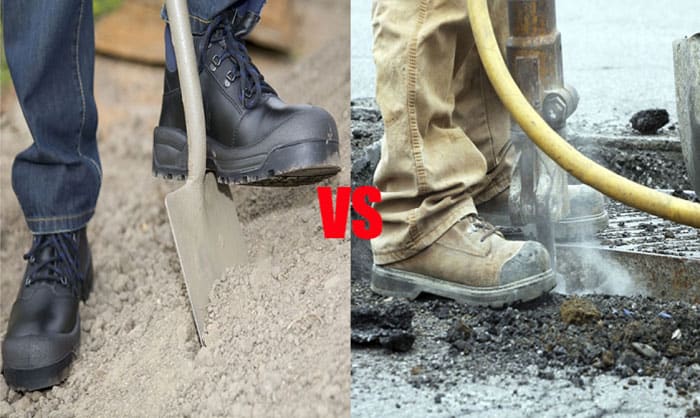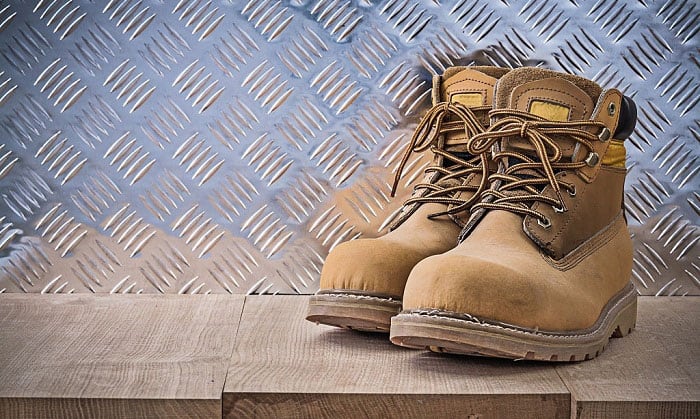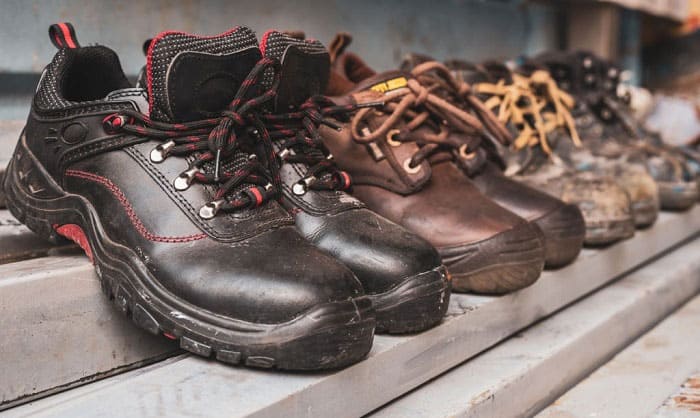When steel toe boots were first introduced, they took the world of safety gear to the next level. For decades, it was the only boot style that was trusted by workers from different sectors and even the military. However, not long after, people started to realize how weighty steel toe caps can be. That was when composite toe work boots came into the market.
Besides the difference in the weight, a steel toe can be more protective and durable, but less comfortable compared to a composite one. In this article, we will provide a detailed comparison between steel toe vs composite toe boots in terms of weight, protection, comfort, and durability. Plus, we will give some pro tips on choosing the right style for your job. Dive in!
Which Ones are OSHA Approved?
If you are buying safety boots for employees, it’s important that they are OSHA approved. OSHA stands for Occupational Safety and Health Standards. They have many strict requirements for footwear at hazardous workplaces. Employers and employees might be issued fines when wearing unapproved safety boots.
The good news is most steel and composite toe boots on the market are approved by the OSHA. As long as the boots have built-in toe caps and an impact and compression resistance rating of 75.
Composite toe vs steel toe boots: Weight
Composite toe boots are made of materials like carbon fiber, Kevlar (a synthetic fiber), plastic, or fiberglass. In general, composite materials are about 30 percent lighter than metal. But to ensure safety, composite toes must be thicker than steel ones. Also, the weight of the cap itself contributes little to the total weight of a boot.
To summarize, you only feel a slight difference between steel toe and composite toe in terms of weight.
Composite vs steel toe: Protection level
Safety is the major reason why we wear work boots. Only purchase boots that meet the OSHA standards:
- The shoes’ upper is made from leather.
- The boots’ soles must be oil-resistant and non-skid.
- The boots must have protective toes that can withstand impact and compression.
It is easy to see that metal is harder, so a steel toe offers more protection when encountering rolling or falling objects. That is correct, but please be aware that all safety boots in the market must stand up to the same standards.
Manufacturers test and rate their safety footwear according to the ASTM International requirements. ASTM International indicates that the toe protective reinforcement must be able to withstand certain impact and compression. Whatever material the toe cap is made from, it must pass the same tests.
In addition, a common misunderstanding is composite toe boots prevent electrical hazard while steel toe, as a metal, does not. It is not the case though. Designers hide the toe protective reinforcement very well under layers and layers of waterproof fabric. Hence, it doesn’t matter whether the toe is from steel or composite materials.
Plus, many manufacturers add metal to their composite material mixture to enhance the sturdiness. If you work closely with electricity sources, our advice is to look for the electrical hazard green tick on the boots themselves.
Despite being able to provide more protection, steel toe footwear is not entirely better than composite ones. It is because jobs have different safety requirements and each style serves its own purposes. Later in this article, we will provide suggestions of what boots are for what specific jobs. Keep reading.
Steel vs composite toe: Comfort
Once safety is taken care of, you might want to consider a boot’s comfort level. Composite toes are mostly from non-metal materials. They are more flexible than steel ones. Generally speaking, composite toe boots are more comfy.
As mentioned above, steel toe boots are a bit heavier than composite toe ones. Some people don’t find this slight difference a problem. But if you walk long distances or stand for hours daily, composite toe boots are better for the feet. Still, the boot weight depends on other factors like:
- Shank: Similar to the protective toe cap, shanks are made from two basic types of materials, steel and composite. They are for keeping the bottom of the feet safe from injuries like punctures. Metal shanks are more weighty than composite ones.
- Sole: A popular material manufacturers use to make boot soles is rubber. Rubber is slip-resistant, waterproof, and insulated. But it can be quite heavy, especially the heavy-duty soles in logger boots.
- Upper: For maximal protection, the upper part of a safety footwear is usually from leather – one of the heaviest fabric materials. Some lighter ones are suede and plastic.
- Insulation: For insulation, work boots must be designed with extra layers and materials to keep your feet warm during freezing weather. Remember that insulated boots are always heavier than regular ones.
To choose safety boots with minimal weight, besides steel vs composite toes, make sure you check these factors. However, we don’t recommend choosing boots only for the sake of lightweight, always put safety first. In other words, sometimes sacrificing a little comfort for more safety is necessary.
To enhance a boot’s comfort level, you should also pay attention to:
- A good fit: Boots can only feel comfortable when they fit properly. When you try on a new pair of work boots, make sure the heel, toes, width, and instep fit snugly and do not hurt or rub against your feet.
- Cushioning: Many safety boots feature a cushioning layer in the sole to enhance comfort for wearers. If you want boots that are as comfortable as possible, look for the cushioning features.
- Padding: Due to the sturdy and heavy nature of work boots, they can feel uncomfortable from time to time. Added heel and toe pads will help support your feet.
- Breathability: Last but not least, make sure the boots you buy have good air circulation. Some waterproof materials make the shoes feel hot and unbreathable.
Steel toe vs composite toe boots: Durability
Once used and maintained the right way, both styles are durable. But being made of metal, steel toe caps are more durable and resilient when encountering heavy loads. A composite cap can protect your toes too, but might crack or break off after the event.
Which Style is Suitable for your Job?
1. Workers in cold weather
Steel, like any other metal, is a good conductor of both heat and cold. When wearing steel toe boots in chilly weather, your toes can get cold easily. The problem can be solved with a nice and warm pair of socks. However, under extreme weather conditions, we recommend avoiding steel toe boots. Some jobs that involve working in frosty weather are offshore oil rig workers, snow shoveling jobs, or simply outdoor workers in a cold country.
2. Construction workers
At busy commercial construction sites, flexibility and mobility are crucial. A pair of lightweight composite toe boots allows you to work at a fast pace while keeping minimal weight on the feet.
Still you have to consider the job safety requirements carefully. If you work closely with heavy objects and dangerous equipment, a steel toe might be needed. Check this article on Top Comfortable Steel Toe Work Boots to stand all day for excellent recommendations.
3. Loggers
Loggers have to deal with large chunks of wood, running chainsaws, and carrying heavy loads daily. Therefore, steel toe boots are necessary to provide maximum protection. Also, according to the OSHA, loggers must wear boots that cover the ankle. If you are looking for logger boots, take note of that too.
4. Airport employees
Though providing an amazing protection level, steel toe boots set off metal detectors. Therefore, composite toe boots are recommended for people who work closely with a metal detector at airports, security checks, or nuclear stations.
If you are an airport employee who wants to wear steel toe boots, there are options. Some modern designs of steel toe boots are upgraded to pass metal detectors. But they can be relatively pricey.
Conclusion
Whether you are a construction worker or an airport employee, learning about the safety features of work boots is crucial. Remember that designers always have their reasons for using a certain material. Both steel and composite toe boots serve their purpose very well when worn correctly.
We hope the article helped you make the smartest choice when selecting safety boots. Please leave your thoughts in the comment section should you have any further questions. We are more than glad to help. See you next time!

Veronica is our content editor. She is a talent in delivery. Her main work is editing and writing articles that are both informative and simple to follow. She is in charge of synthesizing our understanding of what personal protection equipment (PPE) is needed in each job, how to best apply it, and how to visualize that equipment.




